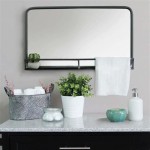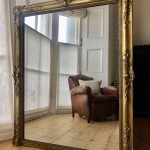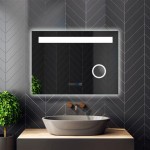Mirroring an iPhone to a Samsung TV Without Wi-Fi
Mirroring an iPhone to a Samsung TV traditionally relies on a shared Wi-Fi network. Both devices connect to the same network, enabling technologies like AirPlay to facilitate screen mirroring. However, situations arise where a Wi-Fi network is unavailable or unreliable. This article explores several methods for mirroring an iPhone to a Samsung TV without utilizing a Wi-Fi connection. These methods involve using wired connections, alternative wireless technologies, and specialized adapter solutions.
The absence of a Wi-Fi network presents a unique challenge. Standard screen mirroring protocols are designed with Wi-Fi connectivity in mind. Therefore, alternative approaches are required to establish a link between the iPhone and the Samsung TV. These alternatives often involve purchasing additional hardware or leveraging built-in capabilities of the devices that are typically overlooked.
Using an HDMI Adapter
One of the most direct and reliable methods for mirroring an iPhone to a Samsung TV without Wi-Fi is through a wired HDMI connection. This approach requires an Apple Lightning Digital AV Adapter, which bridges the Lightning port on the iPhone to an HDMI port, which can then connect to the TV. This method provides a stable and high-quality video and audio transmission.
The Apple Lightning Digital AV Adapter is a small dongle that plugs into the iPhone's charging port. It features an HDMI port and a Lightning port for charging the iPhone while it's connected to the TV. Once the adapter is connected to the iPhone, users can simply plug an HDMI cable into the adapter and the corresponding port on the Samsung TV.
After physically connecting the iPhone to the TV via the HDMI adapter, the Samsung TV needs to be set to the correct HDMI input. This is typically done using the TV's remote control. Navigate to the input source menu and select the HDMI port that the iPhone is connected to. Once the correct input is selected, the iPhone's screen should be mirrored onto the TV.
This method offers several advantages. It provides a direct, low-latency connection, making it suitable for gaming and watching videos. The HDMI connection also supports high-definition video and audio, ensuring a crisp and clear picture on the TV. Furthermore, the wired connection is less susceptible to interference than wireless methods, resulting in a more stable mirroring experience.
However, this method also has some limitations. The user is physically tethered to the TV via the HDMI cable, limiting movement and flexibility. The Apple Lightning Digital AV Adapter is also an additional expense, adding to the overall cost of mirroring the iPhone to the TV. It is also important to ensure that the HDMI cable being used is of sufficient quality to support the desired resolution and refresh rate.
It is also crucial to consider the compatibility of the adapter with the specific iPhone model. While most iPhones with a Lightning port are compatible, it's always recommended to check the adapter's specifications to ensure compatibility. Counterfeit adapters are common, so buying from reputable retailers is important to ensure the adapter functions correctly and doesn't damage the iPhone.
Utilizing a USB-C to HDMI Adapter (For Newer iPhones)
For newer iPhone models equipped with a USB-C port, a USB-C to HDMI adapter can be used. This adapter functions similarly to the Lightning Digital AV Adapter, but instead of connecting to the Lightning port, it connects to the USB-C port featured on modern iPhones. This method offers the same benefits as the Lightning-based solution, providing a direct and reliable connection with high-quality video and audio transmission.
The process for using a USB-C to HDMI adapter is analogous to using the Lightning Digital AV Adapter. The adapter is plugged into the iPhone's USB-C port, and an HDMI cable is then connected from the adapter to the Samsung TV. As with the Lightning adapter, the TV's input source must be set to the corresponding HDMI port for the iPhone's screen to be mirrored.
The USB-C connection offers potentially faster data transfer speeds compared to Lightning, which may translate to slightly improved performance in certain scenarios, such as streaming high-resolution videos. However, the practical difference in performance is often negligible for most users. The primary advantage lies in compatibility with newer devices and a more universal connector standard.
Like the Lightning Digital AV Adapter, the USB-C to HDMI adapter also requires an additional purchase. The user is also tethered to the TV with the HDMI cable. Ensuring the adapter and the HDMI cable support the desired resolution and refresh rate is paramount for optimal picture quality. The user must verify the specifications of the adapter and cable before purchasing.
It is important to note that some USB-C hubs may also include an HDMI port along with other ports like USB-A and USB-C for charging. These hubs can also be used to mirror the iPhone's screen to the Samsung TV. This offers added versatility as users can connect other devices simultaneously.
Exploring Miracast Dongles (With Limitations)
While Miracast is designed to work over Wi-Fi, some Miracast dongles offer the ability to create a direct, device-to-device connection. This would effectively bypass the need for a traditional Wi-Fi network. However, this method is less reliable than a wired connection and may require specific setup procedures.
Miracast is a wireless display standard that allows devices to mirror their screens to compatible displays. It typically relies on a Wi-Fi Direct connection, meaning that devices communicate directly with each other without needing an intermediary Wi-Fi router. The availability of this direct connection depends on the capabilities of the Miracast dongle and the iPhone. Apple devices natively use AirPlay for screen mirroring, which is inherently tied to Wi-Fi networks. This complicates the use of Miracast with iPhones.
To attempt mirroring with a Miracast dongle without Wi-Fi, the user would first need to connect the dongle to the Samsung TV's HDMI port and power it on. Then, the user needs to check if the Miracast dongle offers a direct connection mode. This mode is typically activated through a button on the dongle or via a specific configuration setting. The user interface and configuration options vary depending on the brand and model of the Miracast dongle.
Because iPhones do not natively support Miracast, enabling mirroring involves third-party apps that claim to support Miracast functionality. These apps attempt to bridge the gap between the iPhone's AirPlay technology and the Miracast standard. However, the reliability and performance of these apps can be inconsistent. Many of these applications are riddled with advertisements and may not provide a stable or high-quality mirroring experience.
Furthermore, even with a Miracast dongle offering a direct connection mode and a third-party app, there is no guarantee that the iPhone will successfully connect to the dongle and mirror its screen. Apple's ecosystem is designed to prioritize AirPlay over other mirroring technologies, making it difficult to achieve a seamless experience with Miracast without Wi-Fi.
This method should be considered as a last resort, and users should temper their expectations regarding its reliability and performance. The wired solutions using HDMI adapters offer a significantly more dependable and higher-quality mirroring experience. The complexity of setting up Miracast and the inconsistencies in performance make it a less desirable option compared to other alternatives.
Ultimately, mirroring an iPhone to a Samsung TV without Wi-Fi requires a different strategy than the standard AirPlay approach. While the wired connection via HDMI adapters provides the most reliable and high-quality mirroring experience, alternative methods like Miracast dongles can be explored, albeit with limitations and potential inconsistencies. Determining the optimal solution depends on the user's specific needs, technical expertise, and tolerance for potential compatibility issues. It is always advisable to research the specific devices and adapters thoroughly before making a purchase to ensure compatibility and satisfactory performance.

How To Mirror Iphone Tv Without Wifi 2 Easy Ways

Screen Mirroring Iphone To Samsung Tv Without Wifi

6 Free Ways To Mirror Iphone Samsung Tv Without Apple

How To Screen Mirror Iphone Samsung Tv Without Wifi No Chrome Cast Apple 2024

How To Screen Mirror Iphone Samsung Smart Tv

How To Mirror Or Connect Phone Samsung Smart Tv Without Wifi Any App

2024 Guide How To Mirror Phone Tv Without Wifi

How To Mirror Iphone Samsung Tv Without Wifi

2024 Tutorial How To Mirror Phone Tv Without Wi Fi

3 Ways To Cast Iphone Tv Without Wifi 2025 Guide








